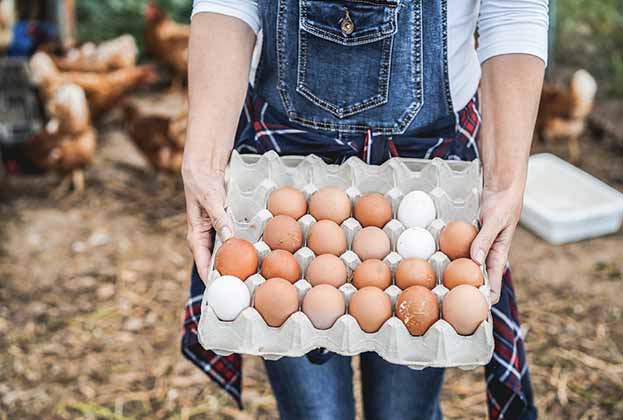Adding incentives to sustainable transport measures can limit Scope 3 emissions
As demand for experiences, well-being and sustainability collides with the cost-of-living crisis and the accompanying decrease in disposable income, businesses must adapt to maintain viable appeal. While challenging, there are opportunities that span these requirements. Our case studies below focus on one of these opportunities; cycling, which is able to provide a unique and invigorating perspective of locations at low cost to both the tourist and the environment.
Safety and security
Safety is the first consideration when deciding to cycle to a destination and should therefore be the first consideration of the business too. Changes to the Highway Code have attempted to improve the situation for cyclists, designating them among the most vulnerable of road users and requiring those using heavier or quicker modes of transport to be especially vigilant. Despite these attempts, cyclists are still likely to avoid busy or unsafe roads and give preference to quiet, scenic and safe routes, such as those that might be created across an estate.
Partner up
Consider crafting routes to incorporate other tourist facilities or hotspots outside of local settlements. Campsites and caravan parks, as well as scenic highlights or monuments, will all attract their own body of tourists. Collaborating will impart a mutual benefit greater than the sum of its components if travel between these places can be encouraged and signposted.
Enhance the experience
Bicycles can also be used to provide mutual benefit in the case of the business and customer’s experiences of tourism, particularly where terrain is not ideal for exploration or there are great distances between points of interest. For visitors, the ability to use the speed and efficiency of a bike to explore in less time represents increased value for money from a day-out holiday. For an estate, bikes permit visitors to explore further, reducing impact on core areas of the estate. Electric bikes, also known as e-bikes, can enhance this effect beyond that of conventional bikes, permitting customers to explore further without fatigue.
Provide affordability
Cycling can be cheaper than other modes of transport. Despite this and other accompanying benefits to health and carbon dioxide emissions, obvious drawbacks, such as convenience and safety, may discourage visitors from considering cycling options. Rural businesses can therefore look to incentivise sustainable transport measures if they wish to limit Scope 3 emissions.
Case Study 1
TRAQUAIR, SCOTLAND
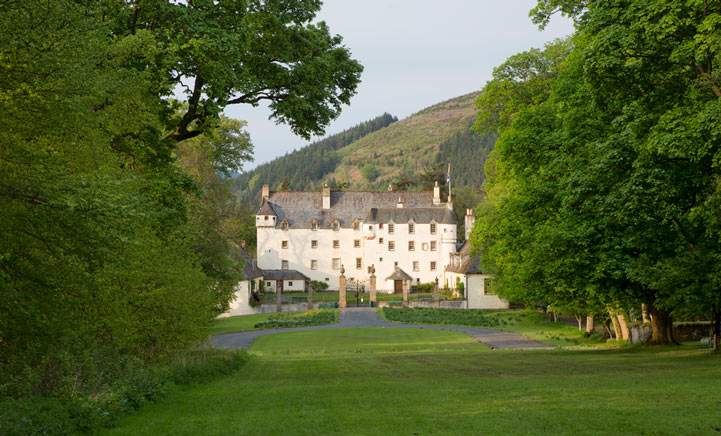
This is Scotland’s oldest inhabited house dating back to 1107 and has remained in the same family since 1491. Over the last 70 years, they have developed a successful tourist destination that today includes a maze, craft workshops, house, gardens, café, brewery, events and weddings. Traquair is committed to the principle of sustainable tourism and along with other green initiatives actively promotes walking and the use of bikes. Creating a footpath and cycle route from the local town of Innerleithen has transformed how people travel to the venue and led to an increase in the number of walkers and cyclists. Upon arrival at the estate, bike racks can be found, providing peace of mind to visitors for the duration of their visit.
Case Study 2
PORLOCK MANOR ESTATE, SOMERSET
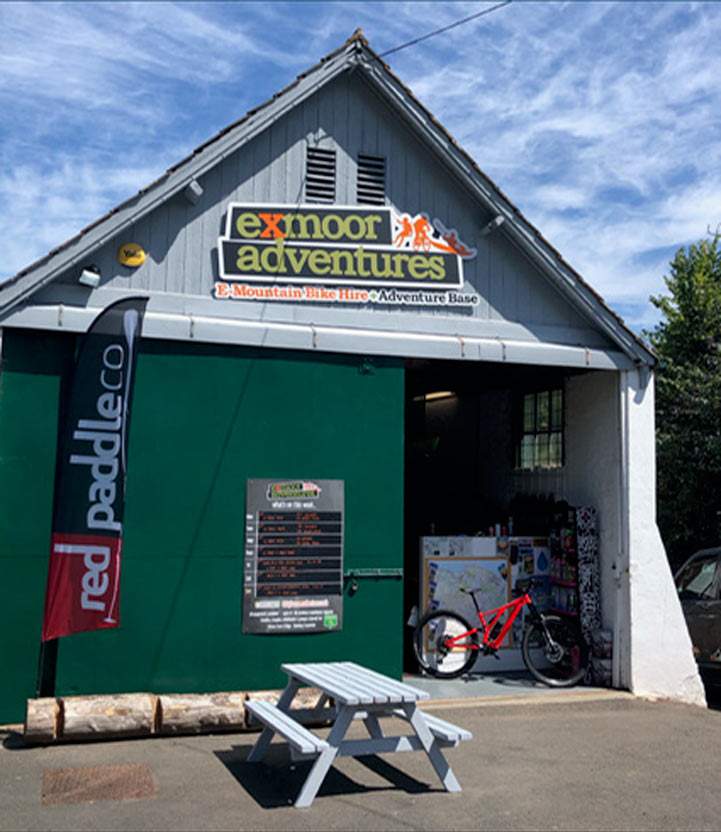
The Porlock Manor Estate is in the Exmoor National Park in West Somerset. The heart of the estate is the ancient port of Porlock Weir, where the estate’s land stretches up steep wooded slopes and valleys to heather-covered moorland. The Porlock Manor Estate has been linked to the Blathwayt family since 1686. A tenant on the estate, Exmoor Adventures, provides the experiences visitors now demand, from kayaking and rock climbing to archery. It also provides mountain bikes for hire, including e-bikes, that allow visitors to explore the national park, together with offering coaching, guided bike rides, uplift days, family and school activities. Exmoor Adventures has received funding from Cycling UK to allow visitors a mountain biking taster session to encourage more people to experience the joys of cycling.
Case Study 3
BLENHEIM, OXFORDSHIRE
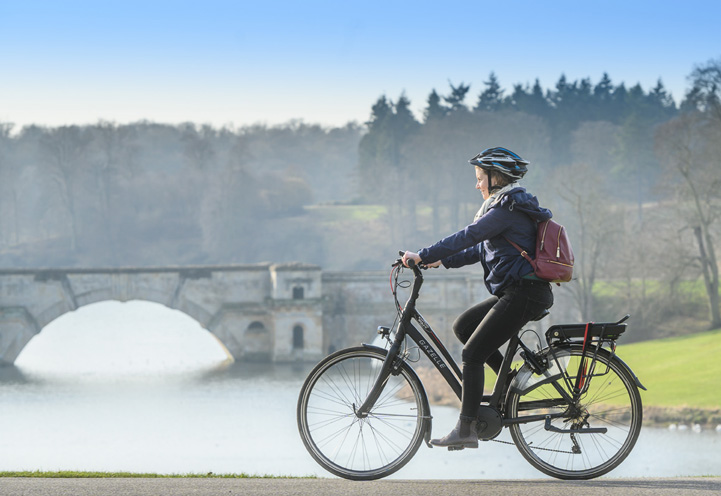
Blenheim Palace sits among more than 2,000 acres of landscaped parkland and formal gardens. The palace was built between 1705 and 1722 and designated a UNESCO World Heritage Site in 1987.
Visitors to Blenheim who travel by bus, train, bike or fully electric car enjoy a 30% reduction on admission prices. This, combined with adopting sustainable transport in the first place, leads to savings of between £8 and £12 per adult; up to a third off the cost of travelling to Blenheim by car. Figure 5 shows the comparison in journey times. Considering the journey from Oxford, it is only walking that takes a significantly greater time; cycling from central Oxford takes only 25 minutes longer than travelling by car and cyclists benefit from the National Cycle Route 5, which takes in “a picturesque diversion through Wolvercote and by the Oxford Canal path” and a dedicated cycleway.
The Rural England Prosperity Fund
Helping to address the needs and challenges of rural areas
Many small rural businesses and community infrastructure projects will benefit from grant funding from the recently announced Rural England Prosperity Fund (Rural Fund). The Department for Environment, Food and Rural Affairs (Defra) together with The Department for Levelling Up, Housing and Communities (DLUHC) have announced that a total of £110 million is available to provide targeted support to rural areas through capital grants.
To address the extra needs and challenges facing rural areas the Rural Fund is in addition and complementary to the £2.6 billion allocated via the UK Shared Prosperity Fund (UKSPF), which supports productivity and prosperity in both urban and rural areas. Eligible local authorities have been allocated funding and will be responsible for distributing the Rural Fund grants between 1 April 2023 and 2025.
The Rural Fund provides capital funding to:
- support new and existing rural businesses to develop new products and facilities that will be of wider benefit to the local economy. This includes farm businesses looking to diversify income streams
- support new and improved community infrastructure, providing essential community services and assets for local people and businesses to benefit the local economy.
Bicycles: paraphernalia or passion?
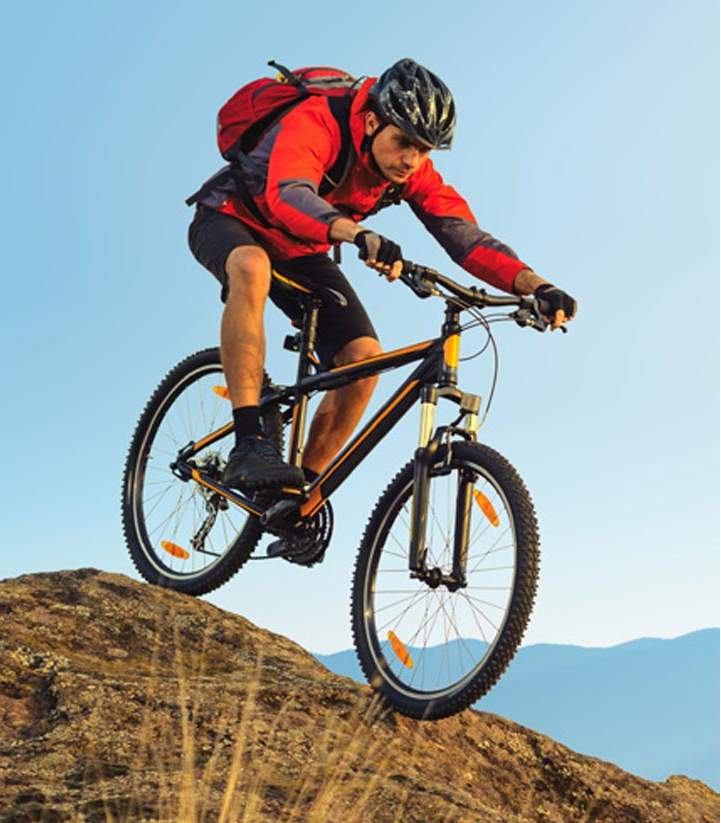
Cycling itself has evolved far beyond being a quick and easy way to commute to work or school, or as a periodic and pleasant outdoor activity that can be done at the weekend. For many people, it is a regular sporting pursuit to which a large amount of money is dedicated, even given the current financial pressures.
Cycling provides a unique and invigorating perspective of locations at low cost to both the consumer and the environment
Nicola Buckingham, Associate Director, Rural Research
- Bikepacking: How to bikepack? Strap a tent to a bike and venture out into the great unknown. These adventure cyclists will need a simple place where they can pitch their tents in order to rest between long days in the saddle.
- Hit the trails: Mountains are few and far between in the UK. Dedicated mountain biking trails give thrill-seeking cyclists a place to hone their downhill skills and are well-suited to locations with difficult terrain.
- Refuel: Cycling can be up to five times more energy efficient than walking. Even so, cyclists will need to stop regularly and refuel. Create a dedicated bike café to provide this essential pitstop and you will see the business become the focal point of the local cycling club ride.
Read the articles within Spotlight: Rural Tourism and Leisure below.
.jpg)
